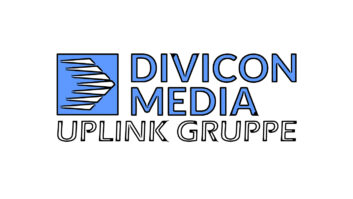WorldBand Media Delivers on HD2
Nov 1, 2010 9:41 AM, By Doug Irwin, CPBE AMD
I’ll admit it’s been several years since I heard the phrase “killer app” applied to HD Radio, but I recently found out about (what is at least) a very interesting use of a station’s secondary channel HD Radio capability right here under my nose in New York. I did some research and a little digging and now I want to tell you about it.
New York has its share of foreign-language SCAs on the air, but recently one foreign-language broadcaster teamed up with Emmis Communications to make use of WRKS’ multicast capability to transmit their specialized format to the large southern-Asian community that lives in the greater New York area. This specialized broadcaster is WorldBand Media.
WorldBand Media’s approach to delivering their programming to the New York market is very much like that of any broadcaster that is local. The format delivered by WRKS’s HD2 stream is known as HumDesi Radio, and according to their website, HumDesi radio is the largest south Asian radio network.

Figure 1. MPLS-Ethernet is basically a Layer II WAN service � a LAN turned into a WAN.
The big difference between WBM and local broadcasters though is that the program itself originates from a centralized location (outside the market) and is delivered via IP to the WRKS transmitter site on top of the Empire State Building. More specifically, the connection to New York is made via an MPLS-E connection provided by a major international carrier. (Take a look at Figure 1. Basically, MPLS-Ethernet is a Layer II WAN service. You can think of it as a LAN turned into a WAN.) This Layer II connection is made to a Cisco 1841 router. An Ethernet output from the Cisco is then connected to an APT Horizon which takes the IP-stream in, and puts analog audio out. (The same Ethernet connection is used to manage the Horizon.) The analog outs are routed to an Audemat Digiplexer 2/4.
The Digiplexer is the heart of this system and has several critical functions. It uses the analog outs from the Horizon as its primary feed. (We’d all call this the “main” STL.) At the same time, it is also able to pull down streaming audio (MP3 codec) from an IceCast/Shoutcast streaming server � and to use it in the event that the “main” STL is failed. Again referring to Figure 1, the “backup” STL is actually delivered to the site via a DSL supplied by Verizon. This particular link is also used to manage the Digiplexer remotely.
According to Audemat, the Digiplexer can also use an internal HDD to source audio files. In the event that both the main and backup STLs are unavailable, the unit can be set to play out files from this drive.
The Digiplexer also has the capability of processing the audio � making use of what Audemat refers to as the HQSound processor. It’s available in 1-, 2- or 4-band versions. WorldBand is using HQSound for some processing effects ahead of the unit’s analog outputs.
Those analog outputs from the Digiplexer feed inputs to a local EAS encoder, so that the appropriated EAS tests and messages can be sent out on the WRKS HD2 stream. The input to the EAS box is effectively the demark between World Band Media and Emmis/NYC. After that, the WRKS importer handles the audio just like any other Importer would.
Of course due to the nature of the IP-based system, a confidence-return audio feed can be sent back to WBM’s central location as well. Everyone needs an air-monitor, right?
The second interesting aspect of the WRKS IBOC transmission here in New York is that it is the only (as far as I know, and as of the day of this writing) higher-power IBOC on the air in the market.
The determination of the correct (increased) TPO is quite simple as long as you marshal all the correct facts about the transmission system to be used. After picking the antenna to be used you will know the correct power gain (that figure comes from the manufacturer). Take the target ERP and divide that by that antenna power gain. This gives you the power you need to get right to the input of the antenna. Then, add up all the losses seen looking backward toward the transmitter itself. In the case of WRKS’ IBOC transmission system, this includes combiner losses in addition to small losses due to the length of the transmission line from the output of the transmitter on the 85th floor of Empire, up to the location of the combiner on the 87th floor, in addition to small losses from the combiner output to the antenna input. If those losses were (for example) 1 dB total, then you would add that 1dB to the power needed at the antenna input itself to derive the power level ultimately needed at the output of the transmitter. Steve Pepe, Emmis’ Chief Engineer in New York, engaged Tom Silliman, President of ERI (the antenna manufacturer) to do these calcs and to bless the various transmission lines, and antenna input power handling capability as all being up to the task of handling the higher IBOC power.
Steve also told me that there have been no complaints about interference to the main signal from the IBOC carriers either before, or after, the power increase.
HumDesi has a section on its website dedicated to helping potential listeners find the right HD Radio for themselves. I have to believe that this is easier (and less expensive) than finding an SCA radio nowadays.
Kudos to Emmis and WorldBand Media for making use of IBOC technology in this fashion.
Thanks to Steve Pepe of Emmis and Brad Herd of WBM for their help with this article. Irwin is transmission systems supervisor for Clear Channel NYC and chief engineer of WKTU, New York. Contact him at [email protected].
November 2010
Choosing a computer audio interface, a tour of the CBC/Radio-Canada’s upgrade, multimedia for digital radio, calculating STL fade margin and more….












